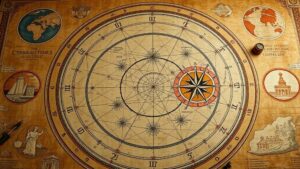Investigating the cryptic carvings at Rosslyn Chapel and their link to the Knights Templar.
Investigating the Cryptic Carvings at Rosslyn Chapel and Their Link to the Knights Templar
Situated in the serene Scottish countryside near the town of Roslin, Rosslyn Chapel is a masterpiece of medieval architecture and a fascinating hub of historical intrigue. Built in 1446 by William Sinclair, the Chapel is renowned for its intricate carvings, many of which are said to bear a profound connection to the mysterious Knights Templar. This article delves into the enigmatic carvings of Rosslyn Chapel and explores their possible links to one of historys most secretive organizations.
The Historical Context of Rosslyn Chapel
Rosslyn Chapel was constructed during a time when the Sinclair family was influential in Scottish society. Initially part of a larger ecclesiastical project, the Chapel became a testament to the theological and artistic ambitions of its founders. Notably, the Knights Templar, established in the early 12th century during the Crusades, were known for their military prowess and, paradoxically, their deep commitment to Christian faith and monastic tradition.
Despite the orders disbandment in the early 14th century, their legacy continued in various forms, and the Sinclair family has often been linked to these remnants through both historical salience and spatial proximity. The carvings within Rosslyn Chapel add another layer of complexity to this connection.
The Carvings: A Closer Examination
Rosslyn Chapel’s interior is adorned with over 110 different types of stone carvings, showcasing a mix of biblical figures, foliage, and even mundane everyday life. Here are some notable carvings relevant to the Templar fascination:
- The Green Man: This common motif symbolizes rebirth and nature, which could allude to the Templar’s integration with nature during their time of power.
- The Master Mason’s Mark: A significant feature that some believe hints at Templar craft secrets and knowledge passed down through generations.
- Angels and Other Religious Figures: Various angels depicted throughout the Chapel may symbolize higher spiritual connections, potentially referencing Templar beliefs.
The Templar Connection: Myth or Reality?
The theory linking Rosslyn Chapel to the Knights Templar predominantly stems from the Sinclair familys alleged historical ties to the order. One compelling piece of evidence cited is the presence of several Masonic symbols within the carvings. The Freemasons, who emerged significantly after the Knights Templar, drew upon the Templar mythos, leading many to speculate that these motifs were borrowed from earlier traditions.
Concrete examples exist supporting this theory. Sinclair family is believed to have provided sanctuary and support to Templar remnants, especially during the purge of the order initiated by King Philip IV of France in the early 1300s. This historical backdrop fuels various theories regarding hidden knowledge and the location of treasure, perhaps allusive to the lost Templar wealth.
Modern Interpretations and Cultural Impact
Rosslyn Chapel has become a focal point for various conspiracy theories, particularly since the publication of novels like Dan Browns The Da Vinci Code. The allure surrounding the Chapel continues to thrive, attracting thousands of visitors each year who seek to uncover the truth behind its cryptic carvings.
Researchers and historians have since engaged in extensive studies on the Chapel, revealing how the carvings are not merely decorative but serve as direct reflections of the ideological and spiritual currents of their time. Tours often highlight the juxtaposition between religious dogma and the theoretical implications of Templar legacy, sparking debates over interpretations that reflect broader themes of faith, secrecy, and knowledge.
Conclusion: Unraveling the Mystery
While the exact nature of the intricacies within Rosslyn Chapel remains enigmatic, it is indisputable that the carvings encapsulate layers of historical and theological significance. As research continues and public interest persists, the debate regarding the Chapels connection to the Knights Templar evolves, illuminating the fusion of art and history.
For those intrigued by both historical inquiry and the allure of medieval mystery, Rosslyn Chapel stands as a beacon–an invitation to explore the depths of human beliefs, their manifestations in art, and the echo of history as it resonates through mysterious symbols amid stone.
As such, visitors and scholars alike are encouraged not just to observe but to engage critically with the complexities surrounding the Chapel, cultivating a greater appreciation for medieval craftsmanship and the lasting impacts of the Knights Templar on both culture and history.


